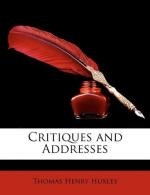Kant defined the special peculiarity of the living body to be that the parts exist for the sake of the whole and the whole for the sake of the parts. But when Turpin and Schwann resolved the living body into an aggregation of quasi-independent cells, each, like a Torula, leading its own life and having its own laws of growth and development, the aggregation being dominated and kept working towards a definite end only by a certain harmony among these units, or by the superaddition of a controlling apparatus, such as a nervous system, this conception ceased to be tenable. The cell lives for its own sake, as well as for the sake of the whole organism; and the cells, which float in the blood, live at its expense, and profoundly modify it, are almost as much independent organisms as the Torulae which float in beer-wort.
Schwann burdened his enunciation of the “cell theory” with two false suppositions; the one, that the structures he called “nucleus” and “cell-wall” are essential to a cell; the other, that cells are usually formed independently of other cells; but, in 1839, it was a vast and clear gain to arrive at the conception, that the vital functions of all the higher animals and plants are the resultant of the forces inherent in the innumerable minute cells of which they are composed, and that each of them is, itself, an equivalent of one of the lowest and simplest of independent living beings—the Torula.
From purely morphological investigations, Turpin and Schwann, as we have seen, arrived at the notion of the fundamental unity of structure of living beings. And, before long, the researches of chemists gradually led up to the conception of the fundamental unity of their composition.
So far back as 1803, Thenard pointed out, in most distinct terms, the important fact that yeast contains a nitrogenous “animal” substance; and that such a substance is contained in all ferments. Before him, Fabroni and Fourcroy speak of the “vegeto-animal” matter of yeast. In 1844 Mulder endeavoured to demonstrate that a peculiar substance, which he called “protein,” was essentially characteristic of living matter. In 1846, Payen writes:—
“Enfin, une loi sans exception me semble apparaitre dans les faits nombreux que j’ai observes et conduire a envisager sous un nouveau jour la vie vegetale; si je ne m’abuse, tout ce que dans les tissus vegetaux la vue directe ou amplifiee nous permet de discerner sous la forme de cellules et de vaisseaux, ne represente autre chose que les enveloppes protectrices, les reservoirs et les conduits, a l’aide desquels les corps animes qui les secretent et les faconnent, se logent, puisent et charriant leurs aliments, deposent et isolent les matieres excretees.”
And again:—




